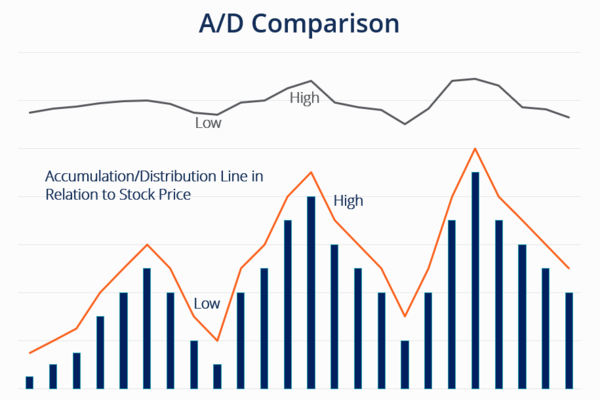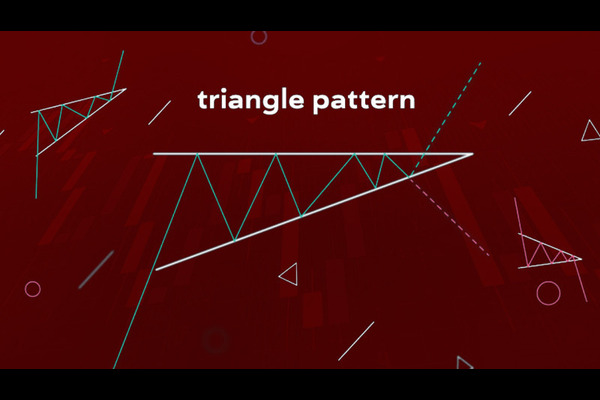Arbitrage, also known as hedging profit, is also known as arbitrage trading or spread trading. Arbitrage refers to the trading method of buying or selling a certain futures contract while also selling or buying another related contract, and simultaneously closing both contracts at a certain time. Compared to one-way speculation, futures arbitrage has a relatively low trading risk and can achieve relatively stable trading profits, making it a relatively stable investment method. Generally speaking, arbitrage can be divided into four types: spot arbitrage, cross period arbitrage, cross commodity arbitrage, and cross market arbitrage. And these four types of arbitrage are ranked in descending order of risk. Investors must choose suitable arbitrage types for trading based on their own positioning and risk preference.

Generally speaking, spot arbitrage is more suitable for spot hedging companies with delivery qualifications, as many times the "return" of the spot price difference occurs when the futures contract enters the delivery month, and only legal entities with delivery qualifications can continue to hold positions, thereby truly realizing the arbitrage return of the spot price difference. It is best to have smooth import and export trade channels for cross market arbitrage, as sometimes it is necessary to take the actual delivery and transfer of goods from two markets to obtain profits. However, cross period arbitrage and cross commodity arbitrage have relatively few restrictions, and ordinary investors can participate. Therefore, general investors should not blindly intervene just because they see a theoretical arbitrage opportunity in the price difference, as they should first consider their own conditions and various possible future situations.
The risk of arbitrage is significantly smaller than that of one-way speculation, but this does not necessarily mean that it has no risk. Sometimes, the risk of arbitrage orders is even greater than that of unilateral speculation orders. Due to the delivery month expiration and delivery characteristics of futures contracts, ordinary investors are unable to hold their positions until the delivery month. Therefore, the return of price difference may not occur until the delivery month, and the profit of price difference return cannot be obtained by ordinary investors.
In addition, fund management is also very important, blindly carrying out arbitrage with heavy positions. In the process of "hedging" before the delivery month, the arbitrage position may be forced to reduce. In the event of extreme limit ups and downs or facing long holidays, both exchanges and futures companies will raise premiums. Therefore, arbitrage orders that have already taken heavy positions will face the risk of being "forcefully flattened" or additional funds. If the "legs" of arbitrage belong to different varieties, it is also necessary to prevent the risk of different margin levels and expansion ranges caused by extreme market conditions causing up and down limits.
For example, the arbitrage between rebar and iron ore, where rebar is listed on the Shanghai Futures Exchange, has a first up and down limit of 4% (followed by a second and third up and down limit of 7% and 9% respectively); And iron ore is located on the Dalian Commodity Futures Exchange, with the first limit of 4% (followed by the second and third limit of 6% and 8% respectively). After reaching the first limit, there are differences in the trading systems related to the second or even third limit (such as margin ratio, the new range after the limit is expanded, the mandatory reduction and closing system, whether to suspend trading for one day, etc.) between the two varieties, all of which may bring huge risks to arbitrage positions. So, before carrying out arbitrage operations, such extreme factors should be taken into account and there should be a set of effective measures to prevent or reduce risks.
Investors often engage in arbitrage trading when the price difference between two varieties reaches or approaches the historical limit range, which is empirically a form of statistical arbitrage. The upper or lower limit of price difference or price comparison, from a historical perspective, is a safe area of low risk. But history is always changing, and current and future price differentials or comparisons may significantly exceed the original limit range due to new factors, which will make historical experience no longer effective. The current design of some arbitrage strategy models is mainly based on the statistical arbitrage principle, which inevitably encounters "black swans" during operation. When the price difference or comparison shows deviation from normal, more reliance should be placed on fundamental analysis. When there have been new changes in the market that have caused price differences to shift, investors need to be brave enough to deny that the original model can no longer adapt to the new arbitrage method and make certain modifications to the model.
When arbitrage, whether to use price difference analysis or price comparison analysis for the comparison of strength between two varieties is largely related to the unit value difference between the two varieties. The author believes that price difference analysis and operation can be used when the unit values of two varieties are relatively close, while price comparison analysis and operation should be used when the unit values of two varieties differ greatly.
For example, in the arbitrage between gold and silver, the value of one gram of gold is much greater than that of one gram of silver, and one gram of gold is approximately 60 times that of one gram of silver. In this case, if you are bullish on Shanghai gold and bearish on Shanghai silver, then use "one more hand Shanghai gold and four more hands Shanghai silver" arbitrage instead of "one more hand Shanghai gold and one hand Shanghai silver".
Cross period arbitrage, as the arbitrage target is the same variety, can normally use price difference arbitrage.
At present, there is a popular intraday hedging arbitrage in the market, which is to long a stronger variety while short a weaker variety, and simultaneously close positions at a later time of the day to obtain profits.
In addition, if there is a significant difference in transaction activity between two varieties (such as plywood to fiberboard, plastic to PVC), the relatively inactive varieties should be traded first, that is, fiberboard or PVC should be traded first, and then the actively traded varieties of plywood or plastic should be immediately reproduced. This can avoid unnecessary losses caused by the rapid fluctuation of active varieties caused by the difference in transaction time.
Utilizing technical differences for arbitrage
The manifestation of technical status is mainly reflected in the K-line (and its combination) and the Moving Average system, which are relatively effective technical tools. One situation is that for varieties of the same type (with a high correlation), if variety A is above the medium to short term moving average and the moving average system is in a diverging state in the same direction, while another variety B is intertwined with the medium to short term moving average and the moving average system is also in an interwoven state, then a "multi A short B" arbitrage strategy should be adopted.
On the other hand, if for a certain period of K line (combination), variety A continuously presents positive K lines or the proportion of positive K lines is very large, while variety B does not have this phenomenon, and even the proportion of negative K lines is relatively large, then the arbitrage strategy of "multiple A and short B" can be adopted.
Arbitrage opportunities brought about by warehouse receipt restrictions in the futures market
There is a delivery system in the futures market, and there is also the concept of warehouse receipts. Warehouse receipts are "guaranteed (quality grade) goods" registered and stored in a designated place by the exchange that have not been delivered but are ready for delivery. At the same time, the exchange has certain regulations on the validity period of warehouse receipts for various varieties, especially for commodities with shorter shelf life such as agricultural products or chemical products. For example, warehouse receipts for plastics generally require cancellation in March. Therefore, since the main contracts for plastic futures currently operate in "January, May, and September", the pressure is usually greatest for plastic contracts in January. So it may cause special changes in the price difference between the January contract and the May contract at that time, such as the continuous expansion of the price difference between May and January, exceeding the historical maximum range. For example, in December 2010, the price difference between the plastic futures 1105 contract and the 1101 contract reached over 1400 yuan/ton, significantly exceeding the conventional price range.
When market funds begin to move to the next main contract in the distant month, due to the impact of capital shocks, futures prices are often driven by short-term irrationality, resulting in irrational changes in the price difference between the current main contract and the next main contract. At this point, there are generally short-term arbitrage opportunities.
Generally speaking, agricultural products and chemical products, as their main contracts are mainly distributed on the three contracts of "1, 5, and 9", often encounter such short-term arbitrage opportunities during the month changing process. However, metals (such as copper, zinc, aluminum, etc.) have relatively small arbitrage space due to the monthly exchange, but it is also a common occurrence. When capturing such arbitrage opportunities, on the one hand, it is also necessary to consider that the operating cycle is short-term, and whether the final result is profitable or not, one should not hold a position for too long; On the other hand, the "supply and demand" attributes of the two target contracts should also be considered in conjunction.
Arbitrage opportunities brought about by differences in the supply and demand relationship of the month in which the futures contract belongs
The overall pattern of changes in futures prices is mainly determined by their supply and demand relationship, while the futures prices of specific contracts are influenced by the supply and demand relationship of the month to which the contract belongs. For agricultural products, as the transfer of main contracts usually takes 4 months, the supply and demand relationship of the current main contract month is likely to differ significantly from that of the future main contract month. For example, the relationship between the current egg futures 1809 contract and the 1901 contract is firstly that the egg supply is expected to be more relaxed in the future than now, and secondly, eggs are not easy to store during the summer heat period in September. Under these two main factors, the price of the egg futures 1809 contract is relatively higher than that of the 1901 contract, and this upward trend may even go higher while continuing.
Of course, in the context of specific fundamental differences, the actual operation of arbitrage opportunities is not blindly "chasing gains and killing losses", but should be rhythmically grasped and intervened in combination with technical analysis and other aspects. We can maintain the concept of "far strong and near weak" in the overall pattern.
In short, the concept of arbitrage trading is no longer narrow and is increasingly being widely used. Especially its low risk and potential for good profits are favored by investors. However, in arbitrage operations, investors must still understand the misconceptions and learn to use some of the techniques to achieve stability and further progress in investment.
【 EBC Platform Risk Reminder and Disclaimer 】: There are risks in the market, and investment needs to be cautious. This article does not constitute investment advice.







